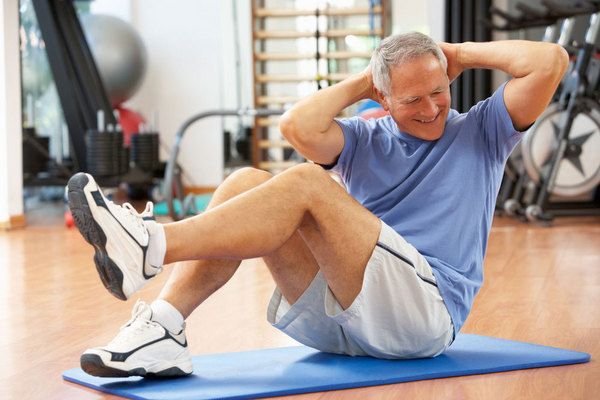Fitness in Middle-Age Linked with Fewer Diseases Later in Life

People who are physically fit during middle age have not only a higher chance of living longer, but also are less likely to suffer from chronic diseases later in life, compared with their less fit counterparts, a new study says.
Researchers measured the physical fitness of nearly 19,000 healthy people in their 30s, 40s and 50s using a treadmill test, and then compared their chronic diseases in their 70s and 80s. They found that the fittest people were nearly half as likely to suffer from a chronic disease compared with the least fit.
Additionally, they found a 20 percent increase in fitness during middle age was associated with a 20 percent decreased risk of developing any of the eight chronic diseases looked at in the study.
"Being fit is not just delaying the inevitable, but it is actually lowering the onset of chronic disease in the final years of life," said study author Dr. Jarett Berry, assistant professor of internal medicine at the University of Texas Southwestern Medical Center.
The researchers used data gathered by the Cooper Center Longitudinal Study, which began in 1970. For the new findings, researchers measured each participant's fitness by observing them on a treadmill, and grouped them into five levels of fitness, taking age and gender into account.
As the participants approached old age, the researchers looked at how many of them had eight chronic diseases: heart failure, stroke, diabetes, kidney disease, Alzheimer's, colon or lung cancer, heart disease and lung disease. The researchers obtained the data on chronic diseases from Medicare claims the participants filed between ages 70 and 85.
Though studies have shown that fitness may increase longevity, the new research shows that it also can stave off chronic diseases, meaning that in addition to living longer, those who were fit in middle age also improve their quality of life into old age, the researchers said.
Sign up for the Live Science daily newsletter now
Get the world’s most fascinating discoveries delivered straight to your inbox.
The effects lasted to the end of life, with fitter people living with less chronic disease even during the last five years of their lives.
The researchers had also asked participants during middle age about exercise habits; however, their performance on the treadmill test is what ultimately represented their fitness.
In an accompanying editorial, Dr. Diane Bild of the National Heart, Lung, and Blood Institute, noted that tests of physical endurance were more strongly linked with longevity and instance of chronic disease, most likely because the test is objective, while self-reporting exercise is not.
Though the nearly 80 percent of the study participants were male, both men and women saw the protective effects of such exercise. The authors acknowledged that those included in the study tended to be well-educated and were primarily white, so the results may not apply to the general population.
Adults are recommended to get at least 150 minutes of physical activity weekly, the authors noted.
Pass it on: Being fit in middle age likely leads to a longer and healthier life — with lower chance of suffering from chronic disease.
This story was provided by MyHealthNewsDaily, a sister site to LiveScience. Follow MyHealthNewsDaily on Twitter @MyHealth_MHND. Find us on Facebook and Google+.












